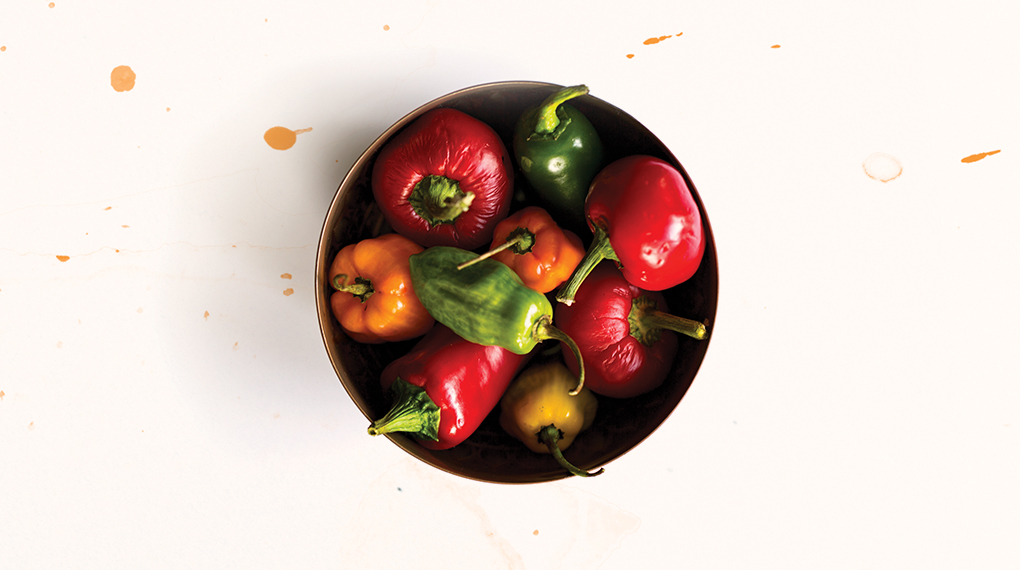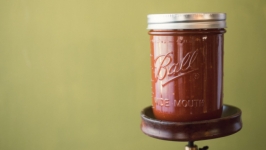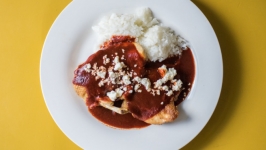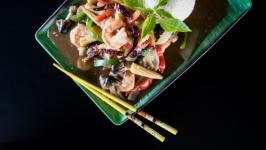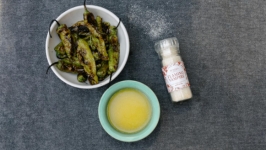Understanding the Scoville Scale
Ever wonder what makes chile peppers hot? They get their heat from a chemical called “capsaicin,” which causes a burning sensation to occur when exposed to raw tissue. The intensity produced by a particular chile’s capsaicin concentration is quantified using the Scoville scale, a subjective measurement of the amount of dilution in a sugar syrup required to neutralize the heat. The more intense the heat, the higher the Scoville heat units (SHU), with pure capsaicin weighing in at 16,000,000 SHU. Modern tests use the more objective high performance liquid chromatography method to obtain more accurate and reliable measures, but with new peppers reaching heat levels higher than what most humans can tolerate, that kind of precision is often unnecessary.
Chile peppers can also be made hotter these days through selective breeding, which has caused self-proclaimed “chili-head” horticulturalists to push the boundaries of science and nature to their literal extremes. Here are a few chiles from around the world ranked in order of their heat level. Some are traditional, some are modern, but all have their place.
BELL PEPPER (0 SHU)
Found in cuisines around the world, the bell pepper, or sweet pepper, contains a recessive gene that actually prevents the formation of capsaicin altogether. It is often stir-fried or added to curries and forms the basis of Cajun cooking as a member of the “Holy Trinity” of cooking when paired with onion and celery.
PIMENTA BIQUINHO (500 - 1,000 SHU)
This cute Brazilian chile is bright red and surprisingly sweet with very little heat. Pickled, they are commonly found next to the olives at churrascaria salad bars across the country.
POBLANO (1000 - 1500 SHU)
A true staple, the poblano is the most ubiquitous chile in Mexican cuisine, taking its name from its homeland of Pueblo. It is most commonly roasted and cut into strips called rajas and used as a filling for everything from tamales to enchiladas. They can be left whole and stuffed to make chiles rellenos or dried to become anchos, which can be ground into powders or toasted and rehydrated to make sauces like the popular mole poblano.
JALAPENO (1,000 - 20,000 SHU)
The state pepper of Texas, the noble jalapeño is likely the only chile to have flown in outer space. This medium-spicy pepper is often sliced fresh, pickled or grilled (stuffed with cheese and wrapped in bacon, of course), forming the crux of Tex-Mex cuisine. When smoke-dried, they are known as chipotle peppers.
BIRD’S EYE CHILI (100,000 - 225,000 SHU)
Sometimes called a Thai chile, this tiny powerhouse is what heats up the spiciest dishes of Southeast Asia. It is common in curries and condiments like sambal or used to spice up Vietnamese soups and stir-fries.
DATIL (100,000-300,000 SHU)
While grown throughout the country, the datil is mainly produced and most notorious for its roots in St. Augustine, where it was believed to have been brought to the U.S. in the late 18th century. Mature peppers are yellow-orange in color and commonly used in Minorcan recipes.
SCOTCH BONNET (100,000 - 400,000 SHU)
Often mistaken for and substituted by its close relative the habanero, this tropical variety is predominantly found in the Caribbean where it flavors jerk dishes, giving them their signature heat and sweetness. In Central America, it flavors ceviches where it is known as aji chombo. It gets its name from its resemblance to the traditional tam o’shanter hat.
GHOST PEPPER (1,000,000 SHU)
Known as Bhut jolokia or red naga in its homeland India, this cultivated varietal held the world record for the hottest chile in the world until it was displaced by the Trinidad Moruga Scorpion in 2012 and subsequent contenders since. Unlike most chilis which store a majority of their capsaicin in the seeds and placenta, the ghost pepper holds it in vesicles throughout the fruit so there’s no escaping its intense heat. Far too hot for normal consumption, it has been known to find its way into pastes and oils that no sane person would ever touch.
CAROLINA REAPER (2,200,000 SHU)
Until very recently, the Carolina Reaper was the unrivaled hottest pepper in the world. Developed by a horticulturalist in Rock Hill, South Carolina, this ominous-looking pepper is a cross between the aforementioned ghost pepper and the red habanero. Searching this particular breed on YouTube will result in hours-worth of schadenfreude as many have documented their attempts to consume this little fireball with often disastrous results.
DRAGON’S BREATH (2,480,000 SHU)
Just this year, a new record-breaking chili was bred in Wales. Using a newly developed plant food, the Dragon’s Breath chile, named for the iconic dragon that symbolizes its homeland, is not only incredibly hot, it’s downright deadly. Although no one has yet to orally consume this monster, it is believed that doing so would likely cause the eater to go into anaphylactic shock, possibly shutting down normal body function.


